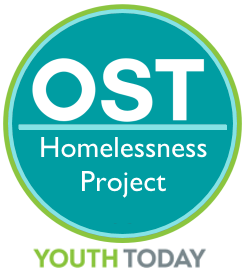 GORODENKOFF/SHUTTERSTOCK
GORODENKOFF/SHUTTERSTOCK
SERIES: PART 4 OF 7
 Part 1: How Do We Make Youth Homelessness Effort Bipartisan?
Part 1: How Do We Make Youth Homelessness Effort Bipartisan?
Part 2: America’s Biases Marginalize Youth, Drive Them to Homelessness
Part 3: Collective Decision-making Can Neutralize Politics of Fear
Part 4: So, How Does This Collective Decision-making Work?
Part 5: Youth Homelessness Is a Symptom, Not a Cause
Part 6: To Work On Youth Homelessness, Brainstorming, Decision Analysis Strong Tools
Part 7: Youth Themselves Must Help Design Supports To Protect Them From Homelessness
Collaboration
We described in the previous column how the approach is four-tiered, beginning with collaboration. Collaboration is a term that has been bantered about and unfortunately, in some circles, gotten a black eye. The truth is that there is a best practice to collaboration that many don’t follow, and so it fails. Not because the concept is bad; it’s the user who doesn’t know what they’re doing.
Effective collaboration begins with understanding the problem and determining not only who is impacted by the problem and why (homeless youth), but who in the community has or should have contact with the affected. It is the latter that is part of the solution, and therefore must be brought to the table.
If the analytical framework for a problem to be solved demands multiple stakeholders to address it, as in this case involving homeless youth, collaboration must be focused on the problem’s domain. That is opposed to the more common organization-focused approach.
An analysis focused on the problem’s domain drives the evaluator to understand that each system sometimes works within a larger system with shared boundaries. Using juvenile justice reform as an example, in an organization-focused analysis, the question is, “How can the the Department of Juvenile Justice reduce the recidivist rates?” But in a problem domain-focused analysis, the question becomes, “Who else shares our problem and has resources to help us?”
For example, we pointed out that youth of color and LGBTQ/GNC (gender-nonconforming) youth are at greater risk of involvement with the juvenile justice system and of homelessness. This goes without question that police are sending these youth to the court, and subsequently the courts are more likely to commit them to secure facilities for lack of other less restrictive and non-criminogenic alternatives.
Though the vast majority of homeless youth who find themselves in trouble with the law are nonviolent, they still remain at high risk of commitment because they possess such high needs that many judges feel compelled to keep them restrained for lack of better alternatives.
High-needs youth
When a system finds itself criminalizing nonviolent marginalized youth, the system makes it worse for the youth and for the safety of the community. The effect of criminalizing nonviolent youth is hyper-recidivism, which is aggravating one’s circumstances by responding to low-risk offenses using high-risk punishers, thus increasing the youth’s risk to reoffend.

Judge Steven C. Teske
Basically, it’s the labeling theory, the self-fulfilling prophecy, bluntly described as if you treat someone like a criminal they will become a criminal. But it’s more than that. By treating someone like a criminal, especially if they are not, we force them into criminogenic environments like jails and prisons and surround them with real criminals.
In other words, we respond harshly to the high needs of the youth, which does nothing to treat the needs while simultaneously increases the youth’s risk to reoffend once released.
It’s not rocket science really.
So, upon applying an organization-focused analysis to the problem of homeless youth, the question is, “How does the justice system prevent the detention and commitment of nonviolent marginalized youth?” But in a problem domain-focused analysis, the question becomes, “Who shares our problem and has resources to help us?”
When the problem demands solutions that are shared by multiple stakeholders, it calls for a broader, domain-focused analysis.
This brings us to identifying a definition of collaboration best suited to the domain-focused analysis involving a problem with multisystem responses.
While a review of the literature reveals several definitions of collaboration, the following definition best encompasses all attributes of collective action: “Collaboration occurs when a group of autonomous stakeholders of a problem domain engage in an interactive process, using shared rules, norms, and structures, to act or decide on issues related to that domain.”
You may ask, “That’s fine and dandy, but how do we jump-start this domain-focused collaborative inquiry?” In other words, who is going to be the champion to get the ball rolling?
Meet the convener
Leadership typically takes the form of a convening role. A convener’s role is “to identify and bring all the legitimate stakeholders to the table.” The convener, in order to be effective, must possess the following characteristics:
1. Convening power: the ability to bring stakeholders to the table;
2. Legitimacy: the stakeholders perceive the convener to have authority, formal or informal, within the problem domain;
3. Vision: the convener understands the problem domain and related issues to process stakeholder concerns and needs; and
4. Stakeholder knowledge: The convener can identify the stakeholders and possesses knowledge of each stakeholder role in the problem domain.
If the effort to address youth homelessness is at the local level, our research of similarly situated justice system efforts with domain-focused problems — the school-to-prison pipeline for example — shows that judicial leaders are best suited to convene stakeholders.

Naomi Smoot Evans
They possess an inherent power through the influence of their robe to gain attention among local leadership. Their legitimacy is unlikely to be called into question because many of the stakeholders often find themselves in the courtroom involved in some way with a single youth, whether it be social services, mental health, schools, law enforcement and so on.
In other words, the juvenile court can be described as the intersection of juvenile justice, which would make the juvenile court judge the traffic cop. We can’t think of any better description to support all the aforementioned characteristics of a convener.
On the other hand, if it’s a statewide effort, the framework changes from a judicially led convening to an executive-led convening. The governor is unquestionably perceived by stakeholders to have authority in matters of juvenile justice. Those leading juvenile justice and correction agencies are appointed by and therefore accountable to the governor. The governor has the authority to convene by the power to issue executive orders.
Example: New Mexico
Take, for example, our focal state of New Mexico. The governor’s cabinet includes the Children, Youth and Families Department, Corrections Department, Department of Health, Human Services Department, Public Education Department and the Department of Public Safety. Although these agencies provide services in some shape or form to youth and young adults when working in concert on a particular problem, such as youth homelessness, there are other agencies in the governor’s cabinet that should be at the table, including the Office of African American Affairs, Office of the Department of Finance and Administration, the Indian Affairs Department and conceivably the Economic Development Department, Department of Information Technology and Department of Workforce Solutions.
Notwithstanding this impressive array of cabinet members at the disposal of the governor, there must be others included in a convening executive order to join the collaborative, including the judiciary and legislative branches. Respecting the legislative branch, it is critical that both sides of the aisle be represented.
Irrespective of the political fact that New Mexico tends to lean to the left of center, it would be a serious error to believe that moderate to left political thinkers are immune to the fundamental attribution error and therefore not subject to implicit biases that contribute to this continuing pathetic state of homelessness. The collective decision-making approach to depoliticize and desensationalize the politics of fear rhetoric by politicians to manipulate public opinion is needed just as much to quash the rhetoric of the right as it is to quash the implicit biases of the moderates and left.
Example: Police shootings of Black Americans
Take, for example, the police shootings of African Americans caught on video leading to protests, some violent, and the sudden outpouring among whites, even among many on the political right, acknowledging that Black Lives Matter is not antithetical to All Lives Matter; that what good is All Lives Matter if a subset of those lives are being oppressed and murdered in the streets and nothing is being done to rectify the problem by the other lives.
Sadly, those ignoring that Black Lives Matter include many white folks in the middle and to the left who like to quip how they are “color-blind” and harbor no biases, and so they remain silent and don’t do anything aggressive about the fact that our systems behave as if Black Lives Don’t Matter. This is best summed up by Kofi Smith, president and CEO of the Atlanta Airlines Terminal Company, which manages the facility operations for Hartsfield-Jackson International:
“Those who have the power, privilege and voice to bring an end to the despicable behavior of others, but choose instead to tolerate, condone or ignore this malicious behavior — THAT is the problem. If you remain silent, sanctioning racist behavior, you are the problem. It is just not good enough to claim that you are not a racist. You have to become anti-racist.”
Speaking to those on the left (or in the middle), it’s not good enough to say you’re sympathetic to the plight of homeless youth or that you harbor no bias against LGBTQ/GNC youth, youth of color or other categories that society frowns on to marginalize them. So long as we sit on our arse and all we do is proclaim how nonbiased we are, we are just as much part of the problem as those who are overtly racist or homophobic.
Steven Teske is the chief judge of the Juvenile Court of Clayton County, Ga., was the national chair of the Coalition For Juvenile Justice and won the 2018 leadership prize from the Juvenile Law Center. He served two terms on the Federal Advisory Committee for Juvenile Justice, is a former member of the Board of Directors of the National Council of Juvenile and Family Court Judges and has testified before Congress numerous times on juvenile justice reform.
Naomi Smoot Evans is the executive director of the Coalition For Juvenile Justice, where she oversees the organization’s efforts to help states create brighter outcomes for youth. She co-chairs the Act 4 Juvenile Justice Coalition and was instrumental in passage of the 2018 Juvenile Justice Reform Act.



























